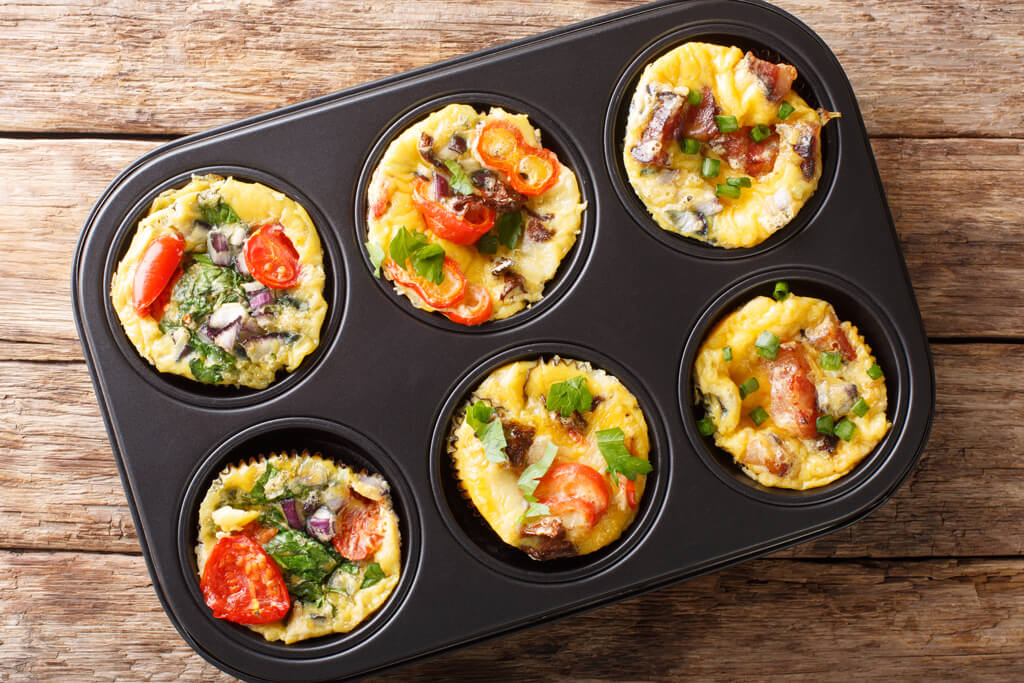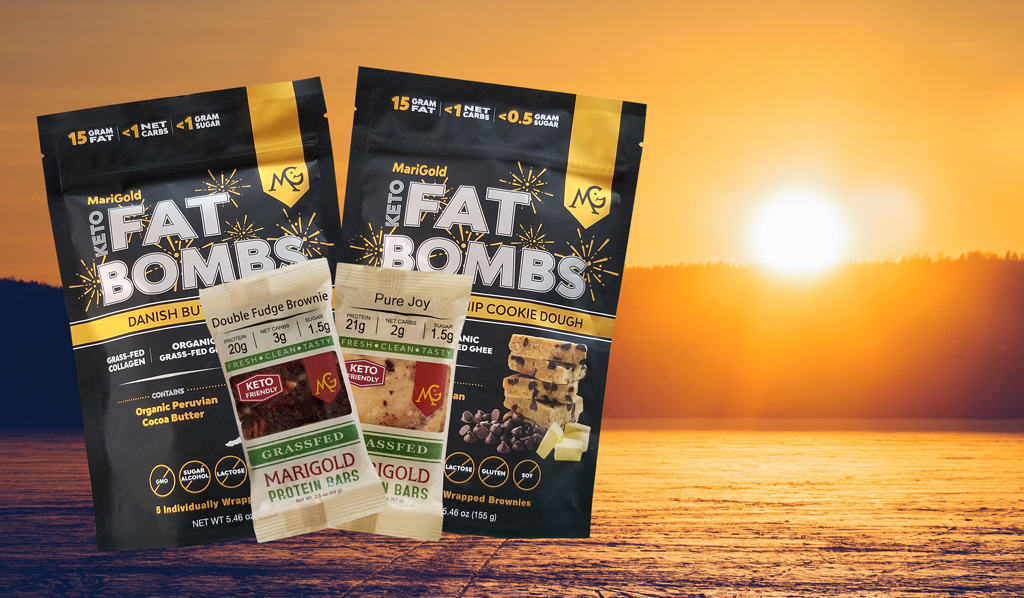Here’s how to meet your vitamin D needs during the coldest, grayest days of fall and winter.
Over the past decade, vitamin D (technically a hormone) has become one of the most researched nutrients—and for good reason. Not only is it critical for bone health, cell growth, immune function, and other body processes, it may also play a role in preventing inflammation and protecting against several forms of cancer. There has been some controversy around the optimal amount: while the RDIs for vitamin D were recently updated to 600 IU per day for adults, some studies suggest that a higher intake (as much as 3,000 IU per day) is needed to maintain optimal blood levels.
Your body naturally produces vitamin D when UV rays from the sun hit your skin, but in cold winter months or northern climates—or if you use sunscreen religiously—you may not get enough. And because vitamin D is naturally present in very few foods, mostly animal products, vegetarians and vegans are at a particularly high risk of deficiencies. Here’s how to meet your needs during the coldest, grayest days of fall and winter:
1. Eggs
One large, commercially raised egg has about 20 IU of vitamin D, but pasture-raised versions have three to four times as much. Eggs from chickens who were fed vitamin D-enriched feed may have as much as 500 IU per egg. The vitamin D is concentrated in the yolk, so egg white omelets won’t do it. If you’re worried about fat, poach or boil eggs instead of cooking them in oil.
Recipe tips: Combine eggs, chopped mushrooms, spinach, and grated cheese, and bake in muffin tins for mini-frittatas; mash hard-boiled egg yolks with avocado and spread on sandwiches; top braised greens with soft-poached eggs.
2. Oysters
They’re high in vitamin D—one 3.5-ounce serving has 320 IU—and low in fat, with only 68 calories per serving. Oysters are also loaded with zinc, important for immune function: one serving has 91 mg, or about 600 percent of the daily value.
Recipe tips: Simmer oysters with stock, milk, onions, and garlic for a simple stew; mix chopped smoked oysters with cream cheese and spread on celery or crackers; top oysters in the shell with lemon and garlic, and broil until done.
3. Mushrooms
Mushrooms are the only plant source of naturally occurring vitamin D; they contain a type of sterol, called ergosterol, that converts to D in the presence of sunlight. (The primary form produced by mushrooms is vitamin D, rather than the D found in animal foods.) But all mushrooms aren’t created equal. Some commercially grown mushrooms are raised in the dark, and contain very little vitamin D. But if they’re exposed to UV light, they can contain high amounts—UV-exposed portobellos, for example, have about 52 percent of the RDI per one-cup serving. To make sure you’re getting D, look for mushrooms that are labeled “UV-treated” or “high in vitamin D.”
Recipe tips: Brush portobellos with olive oil and grill until tender; sauté brown mushrooms with leeks and tarragon; toss shiitakes with tamari and garlic, and roast till tender.
4. Salmon
It’s a rich source of vitamin D, but amounts vary depending on how it’s raised. Wild-caught versions are higher: some have as much as 988 IU of vitamin D per serving, while farmed varieties have only about 25 percent as much. Tuna, herring, mackerel, catfish, and halibut are other good sources of vitamin D.
Recipe tips: Mix canned salmon with Greek yogurt, minced dill, and capers; top salmon fillets with Kalamata olives, chopped tomatoes, and rosemary, and roast until tender; combine cooked salmon with cumin, salsa, scallions, and avocado cubes and serve as tacos.
5. Sardines
These small, oily fish in the herring family are also excellent sources of vitamin D, with 272 IU per serving. Like salmon, they’re also loaded with omega-3 fats and other nutrients. The big plus: canned sardines are super-convenient, and if you buy the bone-in varieties, they’re an excellent source of calcium, with about 350 mg per serving.
Recipe tips: Sauté sardines with roasted red peppers and arugula, and toss with cooked zoodles or pasta; top pizza with tomato sauce, basil, mozzarella, and sardines; sauté chopped kale, onions, and sardines in olive oil, and sprinkle generously with red pepper flakes.
6. Dairy
While vitamin D doesn’t naturally occur in milk, cheese, yogurt, or other dairy products, most commercial varieties contain added D. In the 1930s, the United States began fortifying milk with vitamin D to enhance calcium absorption and prevent rickets, a childhood skeletal disease. Dairy from grass-fed or pastured animals is also higher in omega 3 fats and other nutrients.
Recipe tips: Warm low-fat Greek yogurt with minced garlic, parsley, and shredded Parmesan cheese for a healthier Alfredo sauce; simmer milk, honey, vanilla, and unflavored gelatin, pour into ramekins, and let cool till firm; purée milk, frozen cherries, and cocoa powder, sweeten to taste, and freeze in an ice-cream maker.
Written by Lisa Turner for Better Nutrition and legally licensed through the Matcha publisher network. Please direct all licensing questions to legal@getmatcha.com.
Featured image provided by Joseph Gonzalez
Healthy Fats and Vitamin D
Vitamin D is a fat-soluble nutrient, meaning that it does not dissolve in water and is absorbed best in your bloodstream when paired with a source of fat. Studies indicate Vitamin D absorption can be significantly increased when paired with a diet that includes high-fat foods.
To help your body better absorb vitamin D, it’s important to make sure you’re getting enough healthy fats in your diet.
Our Protein Bars and Fat Bombs are great snack options for giving your body an essential healthy fat boost! Many of our flavors include organic grass-fed ghee and organic coconut oil, which are not only delicious but are also good sources of premium, high-quality fats.
In addition to healthy fats, our Fat Bombs also contain grass-fed collagen for supporting strong bones and healthy skin.
It’s also important to maintain a healthy gut to make sure you’re absorbing vitamin D as well. Many of our snacks include ingredients like L-Glutamine and Sunflower Lecithin for protecting digestive system lining along with many other health benefits.
As always, everything we make at MariGold is low (or no sugar), made with REAL FOOD premium quality ingredients that are non-GMO, gluten-free, soy-free, grain-free, chemical and preservative-free, and INCREDIBLY DELICIOUS!








